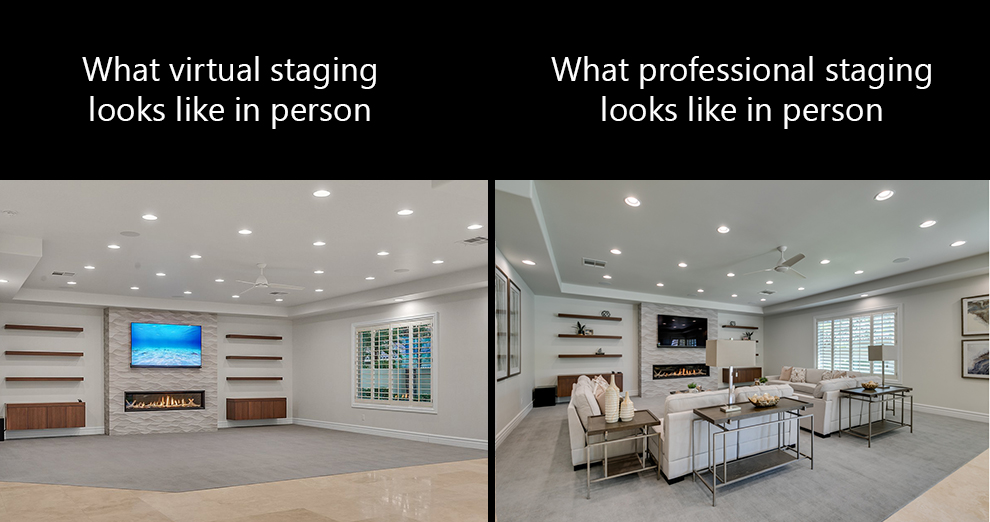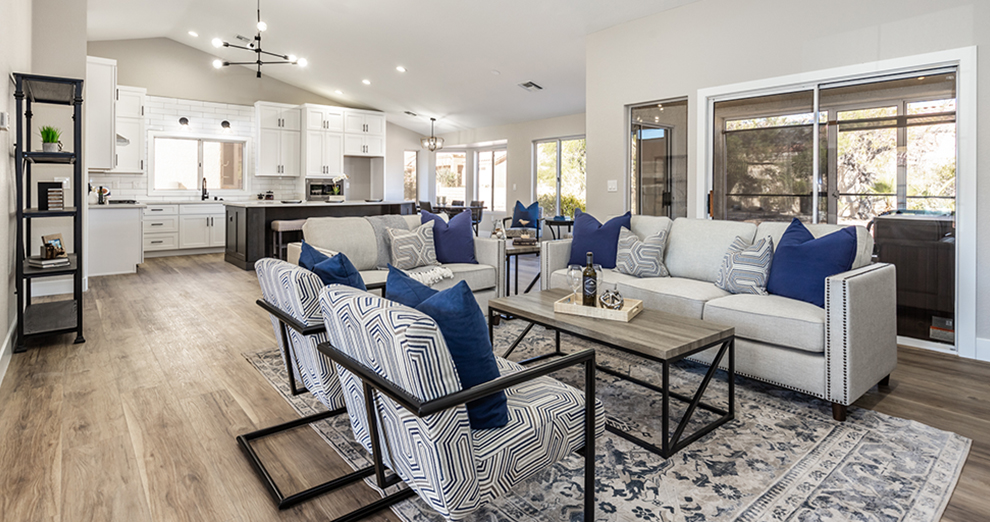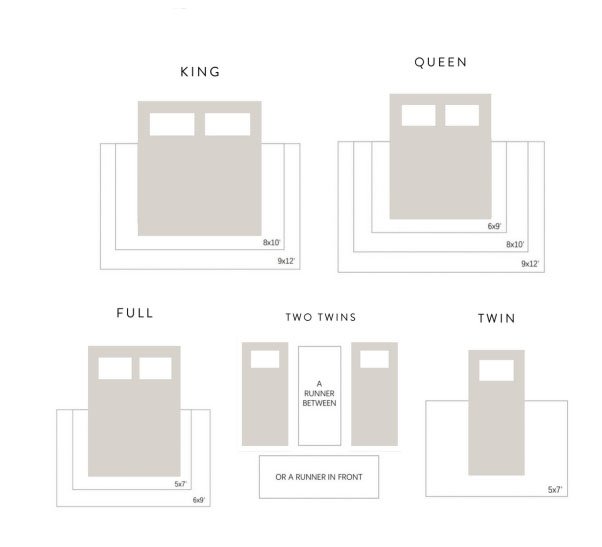Virtual staging is a type of home staging in which vacant photos of a home are digitally edited. Adding or removing furnishings, features or paint color can be done to enhance the room. This is done for the benefit of online marketing so that home buyers will be inclined to visit the home in person. The images of furniture and decor are not real. The property is not truly furnished, rather the images are digitally altered with a service similar to photo shop.
Some real estate agents are turning to virtual staging as a cheap alternative to professional home staging. While it costs much less than actual home staging, you get nothing more than “pretty online pictures”. Virtual staging can show what a property could look like on a computer screen but there is no impact or emotional connection for those that visit the home in person. The technology for virtual staging has come a long way and virtually-altered photos look a lot more realistic than they used to. This realism is both a plus and a danger. Unfortunately though, virtual staging can lead to real estate legal issues and negatively impacted visitors.
Disappointed Visitors
Software programs allow you to change wall colors, insert furniture or show possible upgrades. These changes may make photos appealing to potential buyers searching online. This may also provide an increase in showings. However, once virtual imaging gets people in the door, potential buyers viewing the home in person will certainly be disappointed as they look at vacant, empty rooms.
They will be wondering why they are not seeing the beautifully-staged home they saw online. This will often cause the potential home buyer to question why they even took the time to visit the home in person. They might even find themselves wandering through the empty house wondering why the owners had to move out so suddenly and equate it with a seller being desperate and illicit a low-ball offer. There will be no amazing first impression or emotional connection.
False Advertising
Photos do help sell a house, but how do we know that the images and dimensions in a “virtually staged room” are accurate? Most importantly, editing out flaws or altering the appearance of rooms in houses for the sole purpose of selling the house is bordering on deception.
Aside from major disappointment at a viewing, virtual staging can be perceived as false advertising and lead to real estate legal issues if you aren’t careful. To avoid a misrepresentation lawsuit, take these precautions:
- Disclose all virtual staging. Any photos that are digitally altered should be clearly labeled to show that they are possibilities for the property. In addition to helping avoid legal issues, this clear notice can prepare interested parties to see an empty property at a showing.
- Share current and modified pictures. One clear way to give potential buyers a sense of the space and its possibilities is to show current and modified pictures side by side. Use clear labels to give buyers a real view of the property, while helping them imagine what it could look like with furniture or changes.
- Don’t cover up issues. It may be tempting to digitally remove the water stain in the ceiling or other flaws in the property, but this could lead to legal claims of misrepresentation.
- Virtually staged images should show how things could be. Staged images should show how a buyer could realistically change the house. It’s fine to remove a garbage can from an outside shot of the house, but don’t remove permanent structures such as high power lines or a water tower.
- Get legal advice. Before using virtual staging, you may want to get legal advice on specific changes you can make, or specific language to use for disclosing that photos have been digitally staged.
MLS Fines
Photos that create a false reality are misleading and will result at a minimum in MLS fines and removal of all of your photos except one main exterior photo. To learn about the new guidelines regarding Home Staging and the MLS rules regarding virtual staging, watch the newly released video featuring our 2019 Vice Chair of the MLS Board of Directors, entitled “Virtual Staging with Georgia Purpura” at https://www.youtube.com/watch?v=CF2JXd71egc&feature=youtu.be
Legal Concerns and E&O Insurance
Years ago, the National Association of Realtors® (NAR®) Magazine released an article cautioning Realtors and Sellers against the use of virtual staging. It is a risky proposition that could find itself being worked out in a court of law. If you are sued for misrepresentation or failure to disclose, you’ll want legal advice right away.
The right real estate E&O is essential when real estate legal issues arise. Does your E&O Insurance protect you and your Broker from potential legal concerns if you choose to utilize virtual home staging? How do you make sure potential buyers know photos have been altered?
The moral of the story is very clear. Buyers need to experience a real staged house with real furnishings and décor to have a real emotional connection to a home and cause them to want them to make it their own. There are no reputable new home builders that utilize faux, virtual staging in lieu of actually designing and staging their model homes with furniture, art and decor. Builders understand the only way to provide amazing first impressions and emotional connections to a home are with actual, professionally designed home staging installed by an experienced Home Staging company.
If you would like to learn more about the successful impact of actual home staging, visit Our Success Stories. To learn how more about our home staging services view our Digital Brochure and let us be your preferred Las Vegas Homes Staging company.




